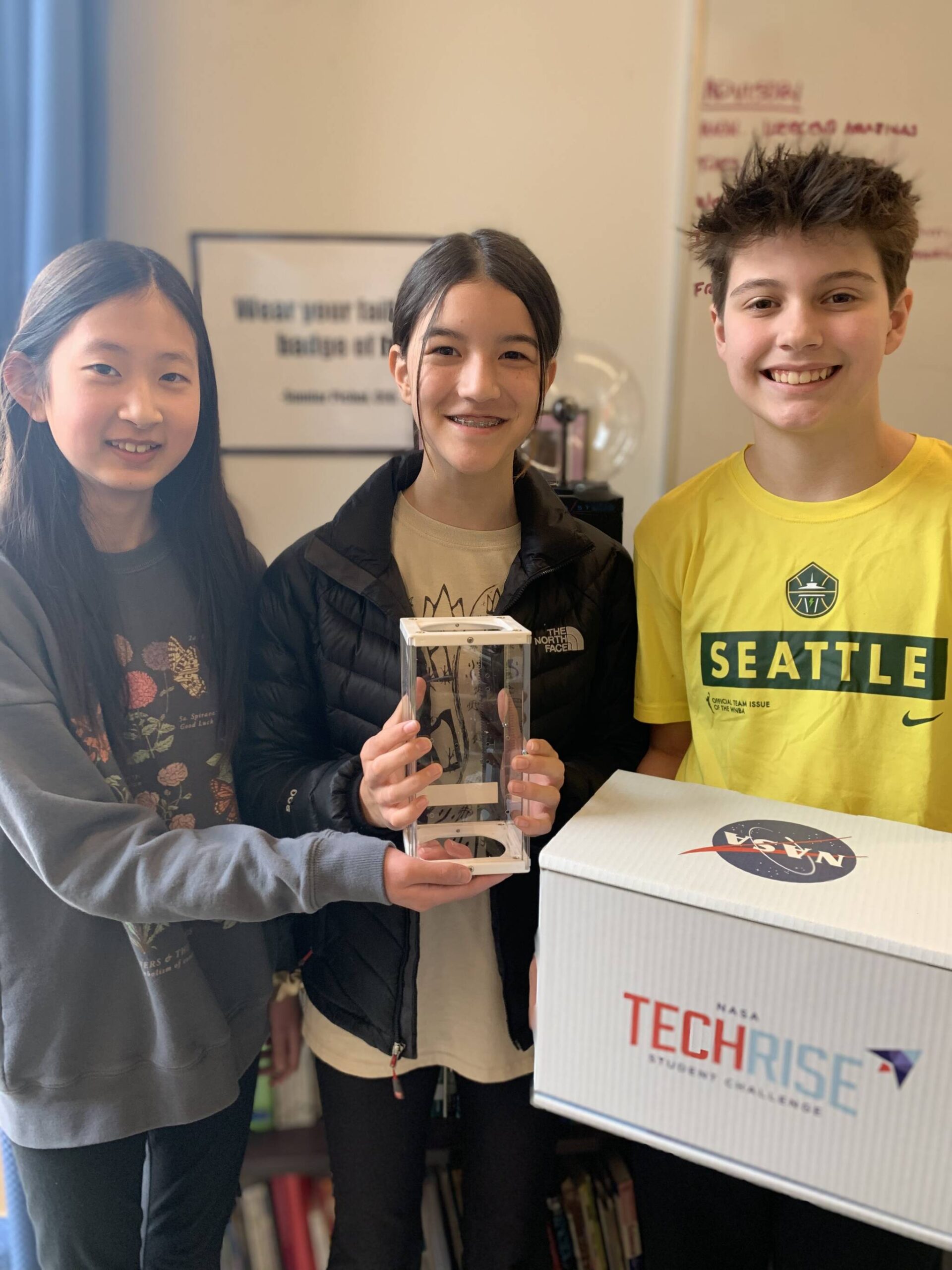Three young Mercer Island residents and their classmates are soaring, and NASA has taken notice of their exceptional science skills.
Kaitlyn Chu, Ellie Klesert and Nova Hagen are part of a seven-member sixth- and seventh-grade team at the Open Window school in Bellevue that were recently named a rocket-powered lander winner in NASA’s annual TechRise student competition.
The team also consists of Bellevue’s Asher Cook and Sophie Mathew, Issaquah’s Grady Moore and Sammamish’s Nick Nevils and they operate under the moniker of LUMINAS (Lunar Module for Innovation and Novel Experiments in AI, Seeds/Simulants/Space Junk).
After evaluating their submitted proposed science and technology experiments, NASA selected 60 teams nationwide to build their experiments in the rocket-powered lander and high-altitude balloon realms and have them tested on a NASA-sponsored flight. Each team receives $1,500 and a flight box to get building, and lands technical support from Future Engineers advisers as they traverse their creation journey this summer.
According to Trudi Hoogenboom, Open Window sixth- and eighth-grade science instructor, the seventh-graders got into space sciences lift-off mode by engaging in four months of lessons with seventh-grade instructor Elaine Chao.
“We all got together on weekends to come up with scientific experiments and learn to write a scientific proposal,” Hoogenboom said.
Added Chao regarding the space mission project: “Students who didn’t previously consider themselves ‘science’ students were some of the most invested in the space mission design project. I loved seeing students’ enthusiasm while problem solving with their teammates as they made major decisions about their mission and design of their space craft.”
Chu rolled out the various elements of their experiment, which consists of several smaller tests that include: “Using AI to detect lunar craters, collecting space debris left over from space vessels re-entering Earth’s atmosphere, measuring the amount of sulfur dioxide in the atmosphere, and viewing the effects of launch and descent on dormant tardigrades, lunar soil simulant, and Pacific Dogwood seeds.”
Hagen added that students met with an engineer each week to learn how to solder and code. On choosing to use that particular species of Dogwood seeds, Klesert noted that the Open Window school sits on Duwamish land and those seeds are native to its people.
Chu said that their multi-component experiment gave them an edge over the competition and they can achieve more during one launch. Klesert added that each experiment had a purpose, and Hagen noted that delving into things that they are interested in — like utilizing AI to detect craters — was crucial to their success.
As for dream jobs for each Islander, Klesert wants to become a biologist, Hagen aims to get into sports statistics and biology enthusiast Chu is drawn toward the veterinary world.
“I was elated and immensely proud of my students’ triumph in the NASA TechRise competition, their dedication and innovative thinking truly shone through. Their success stemmed from exceptional teamwork, creativity, and interest in solving complex problems,” Hoogenboom said.
NASA weighed in on how the students benefit from engaging in the competition: “Cultivating creativity and curiosity and inspiring students to pursue STEM careers is one of NASA’s most important missions,” said Prasun Desai, deputy associate administrator of Space Technology Mission Directorate at NASA headquarters in Washington.
Open Window is an independent K-8 school, nurturing and inspiring students of high intellectual potential (https://www.openwindowschool.org/).


